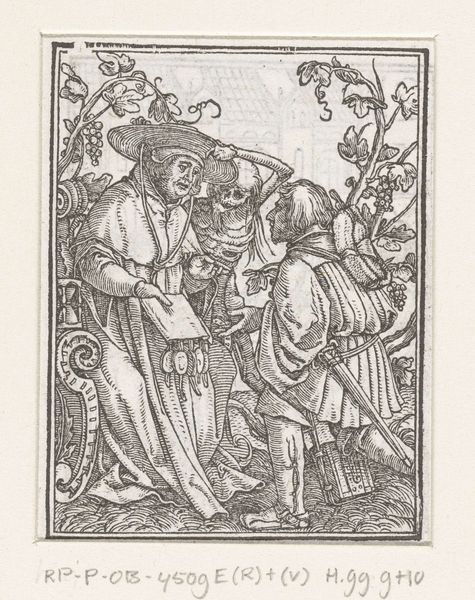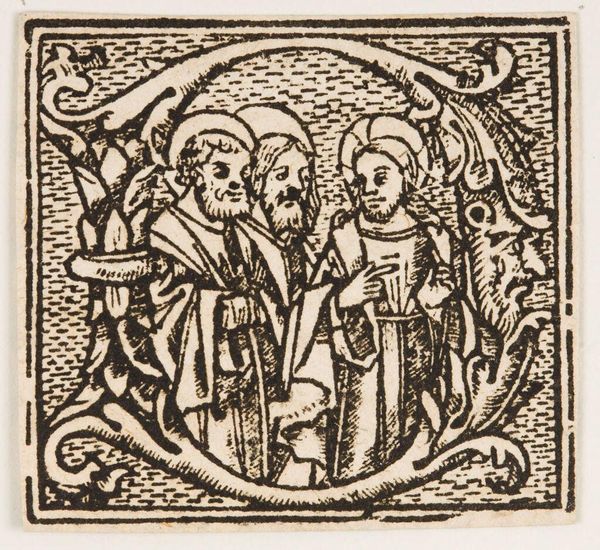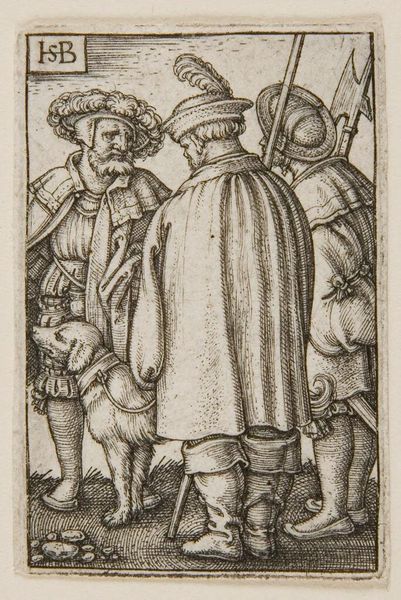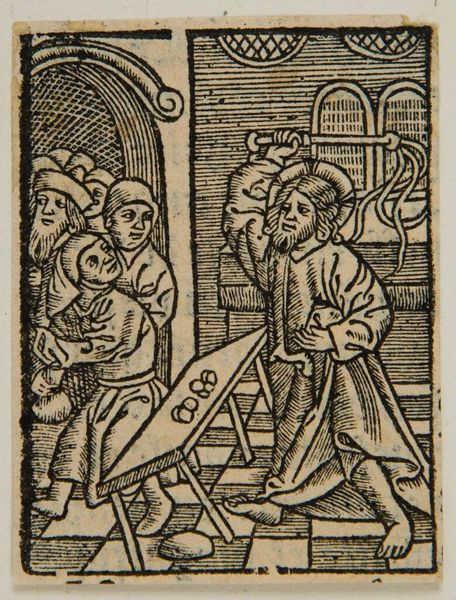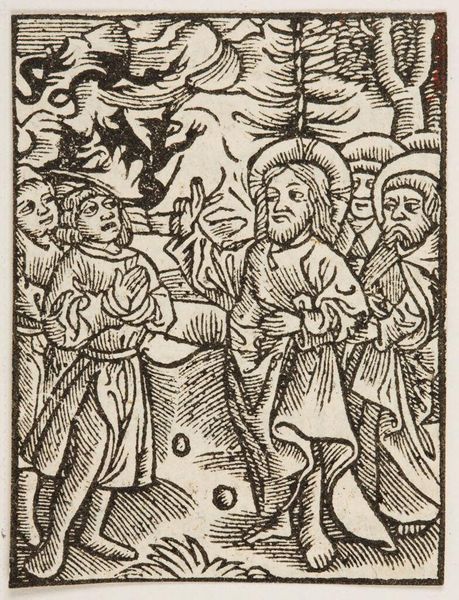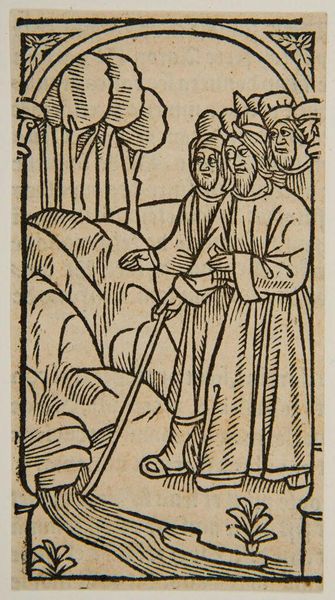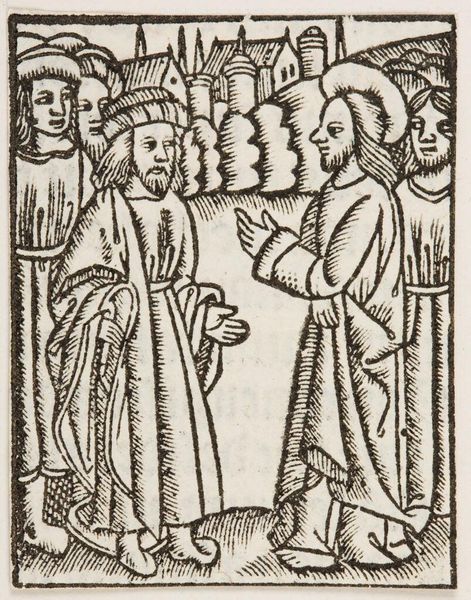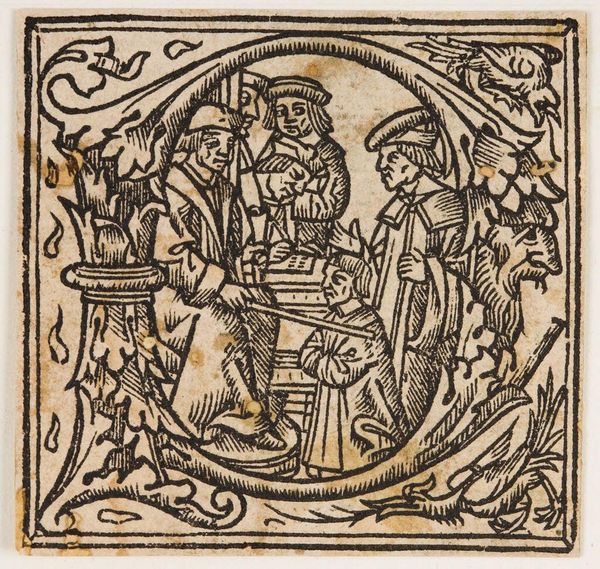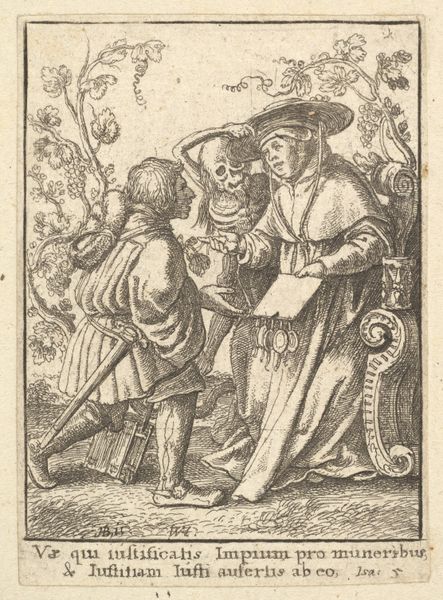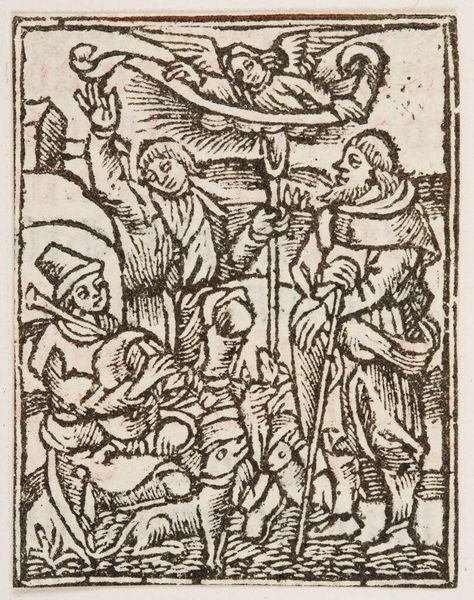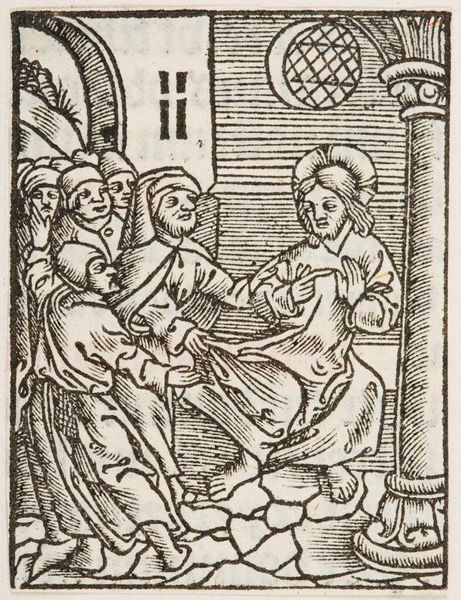
Copyright: CC0 1.0
Curator: Hans Holbein the Younger's woodcut, "The Cardinal," presents us with a stark image. The hatching and cross-hatching create a dramatic tonal range for such a small piece. Editor: It's certainly unsettling. The skeletal figure looming over the Cardinal immediately establishes a mood of foreboding. I wonder about the historical context in which such imagery was produced and consumed. Curator: Holbein was, of course, working in a period of immense social and religious upheaval. Consider the production of woodcuts: the relatively inexpensive nature of the medium allowed for broad dissemination of such potent moralizing. Editor: The composition guides our eye to the Cardinal's face, but Death's presence is undeniable. The formal tension between the figures is brilliantly executed. Curator: Indeed, the materiality of the print, the very texture of the wood, lends a rawness that speaks to the immediacy of death's presence in everyday life. We must consider the economic forces at play in the printing and distribution of these images. Editor: Perhaps, but the enduring power of Holbein's "Cardinal" stems from its masterful arrangement of form and figure, transcending any singular interpretation. Curator: I agree. Ultimately, both the material circumstances and the artist's skill contribute to the artwork's lasting impact.
Comments
No comments
Be the first to comment and join the conversation on the ultimate creative platform.
